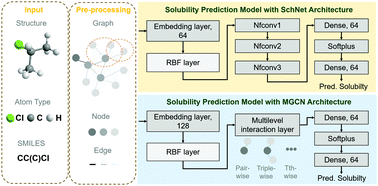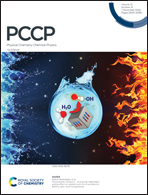Accurate predictions of aqueous solubility of drug molecules via the multilevel graph convolutional network (MGCN) and SchNet architectures
Abstract
Deep learning based methods have been widely applied to predict various kinds of molecular properties in the pharmaceutical industry with increasingly more success. In this study, we propose two novel models for aqueous solubility predictions, based on the Multilevel Graph Convolutional Network (MGCN) and SchNet architectures, respectively. The advantage of the MGCN lies in the fact that it could extract the graph features of the target molecules directly from the (3D) structural information; therefore, it doesn't need to rely on a lot of intra-molecular descriptors to learn the features, which are of significance for accurate predictions of the molecular properties. The SchNet performs well in modelling the interatomic interactions inside a molecule, and such a deep learning architecture is also capable of extracting structural information and further predicting the related properties. The actual accuracy of these two novel approaches was systematically benchmarked with four different independent datasets. We found that both the MGCN and SchNet models performed well for aqueous solubility predictions. In the future, we believe such promising predictive models will be applicable to enhancing the efficiency of the screening, crystallization and delivery of drug molecules, essentially as a useful tool to promote the development of molecular pharmaceutics.

- This article is part of the themed collection: Emerging AI Approaches in Physical Chemistry


 Please wait while we load your content...
Please wait while we load your content...